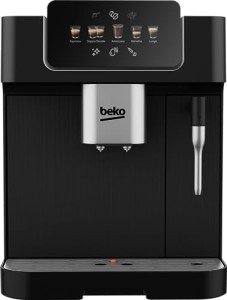The No. One Question That Everyone In Bean To Cup Coffee Beans Should Be Able To Answer

Bean To Cup Coffee Beans: Elevate Your Coffee Experience
Coffee has become more than simply a morning routine; it represents a way of life for lots of. Recently, the trend of "bean to cup" coffee has gained substantial traction, appealing to coffee lovers who prefer an unequaled brew experience. This comprehensive guide will delve deep into the principle of bean to cup coffee, its advantages, different kinds of coffee beans, and even the best techniques for developing.
What is Bean to Cup Coffee?
Bean to cup coffee describes the process of making coffee directly from whole coffee beans. The "bean to cup" journey consists of numerous stages: selecting quality beans, grinding them newly, brewing them using a mechanism developed particularly for this technique, and enjoying the end product. This procedure is often assisted in by specialized coffee machines that feature incorporated mills.
The Bean to Cup Coffee Process
The journey from bean to cup generally includes the following actions:
- Selection of Beans: Picking high-quality beans from different areas.
- Grinding: Freshly grinding the coffee beans to preserve flavor.
- Developing: Using warm water to extract coffee flavors according to preferences.
- Delighting in: Relishing the rich taste and aroma directly from freshly brewed coffee.
Advantages of Using Bean to Cup Coffee Beans
- Freshness: Beans can be ground fresh each time, protecting the natural aromas and tastes.
- Quality assurance: Consumers have higher control over the type and quality of beans utilized.
- Personalization: Easily tailored brews from the grind size to the coffee strength.
- Convenience: Many bean to cup machines are user-friendly, making coffee preparation uncomplicated.
Benefits Table
| Advantages | Description |
|---|---|
| Freshness | Keeps optimum aroma given that the coffee is ground newly. |
| Quality assurance | Users select their coffee beans for preferred flavor. |
| Modification | Direct control over grind size, strength, and more. |
| Convenience | Easy operation with minimal actions for developing. |
Types of Coffee Beans
When it comes to bean to cup coffee, the option of beans can substantially impact the flavor profile. The two main kinds of coffee beans are:
- Arabica: Known for its sweet and soft taste, Arabica beans are the most popular worldwide, accounting for about 70% of the world's coffee production. They frequently have a vast array of flavors, from fruity to nutty.
- Robusta: These beans have a stronger, harsher taste compared to Arabica and include more caffeine. Robusta beans are typically utilized in espresso blends for added body and crema.
Other Types of Beans (Brief Overview)
- Liberica: Known for its unique and distinct profile, typically explained as fruity and flower.
- Excelsa: A variety of Liberica, frequently used to offer tartness in blends.
Popular Bean to Cup Machines
There's a large variety of bean to cup coffee machines on the marketplace, catering to the varying requirements of coffee drinkers. Here's a list of popular brand names and designs:
- DeLonghi Magnifica: Known for its versatility and ease of use.
- Jura E8: Offers a high-end experience with its sleek design and advanced features.
- Breville Oracle Touch: Combines automatic features with manual controls for the best of both worlds.
Frequently asked questions about Bean to Cup Coffee Beans
Q1: How long do coffee beans last?A1: Roasted coffee
beans normally last for about 2-4 weeks when kept in an airtight container, away from heat and light. For Bean To Cup Coffee Machines For Home , it is best to consume them as fresh as possible. Q2: Is it much better to grind coffee beans simply before brewing?A2: Yes, grinding coffee beans prior to developing makes the most of freshness and flavor. Pre-ground coffee
can lose its optimal taste within minutes. Q3: Can I utilize any kind of coffee bean in a bean to cup machine?A3: Most bean to cup machines can accommodate different coffee beans,
however it's suggested to inspect your machine's specs for the very best outcomes
. Q4: How often need to I clean my bean to cup machine?A4: It is suggested to clean your machine every 1-2 weeks, depending upon usage. Comprehensive cleansing must be done at least
as soon as a month. Brewing Techniques While bean to cup machines
streamline the brewing procedure, various approaches can be utilized for the best outcomes: Espresso: Strip down the essence of the bean and offer a focused shot with rich tastes. French
Press: A technique that enables the coffee premises to steep, yielding a profound body and taste. Pour-over:
- A technique that allows accurate control over developing time and temperature, causing a more fragile taste extraction. The bean to cup coffee experience goes beyond conventional developing approaches, using an intimate relationship with the coffee-making procedure.
- By selecting premium beans chosen for specific choices and utilizing efficient machines, coffee lovers can enjoy an abundant and fresh cup
of coffee every day. The capability to manage every element of the brewing procedure elevates it from a basic beverage to a crafted experience, guaranteeing that each cup reflects individual taste and quality. Embracing the bean to cup approach is not simply about drinking coffee; it's about savoring every moment, fragrance, and taste that comes together in a perfect cup.

